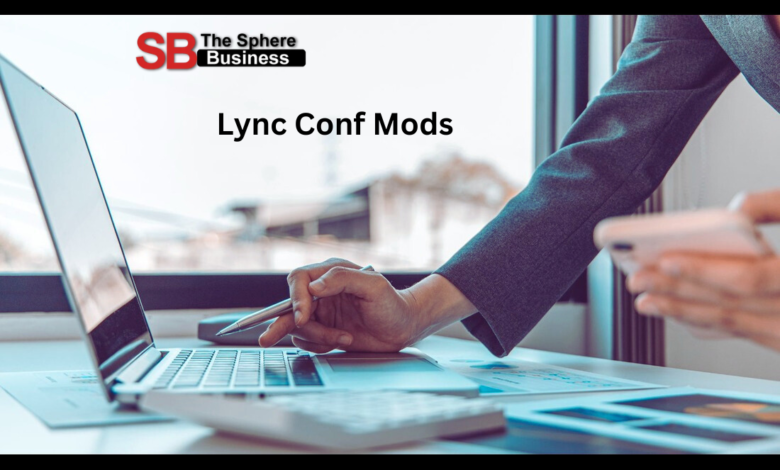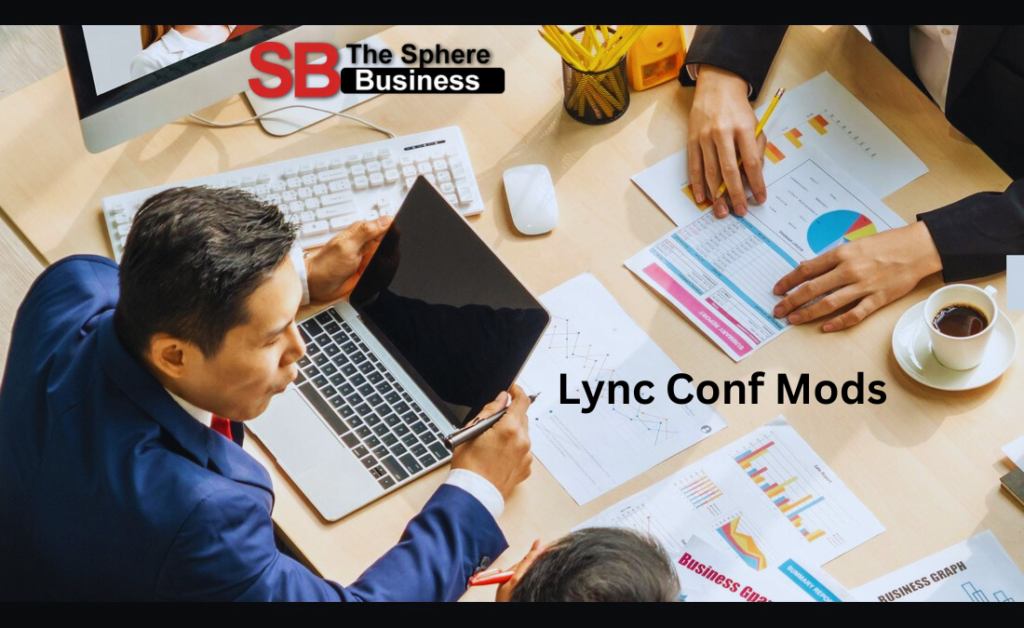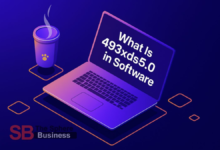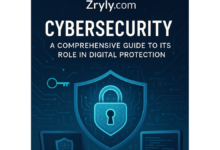Understanding Lync Conf Mods: Key Features and Benefits

In the world of modern communication, organizations strive for efficiency, collaboration, and seamless interaction, especially when dealing with remote teams. One of the tools that has played a pivotal role in achieving these goals is Microsoft Lync. While the product has since evolved into Skype for Business and now Microsoft Teams, Lync’s legacy continues to influence the way we manage conferences, meetings, and communication in a professional environment. This article delves into Lync conf mods (Lync conference modes), their significance, features, and how they contributed to enhancing business communication and virtual collaboration.
What Are Lync Conf Mods?
Lync Conf Mods, or Lync conference modes, refer to the settings and options available to users and administrators for configuring and managing conference calls within Microsoft Lync. These modes primarily control how participants interact during a conference call, the privileges they hold, and the overall structure of the meeting.
Lync Conf Mods essentially cater to the dynamic needs of an organization. Whether it is a large enterprise, a small team meeting, or a training session, Lync’s conference modes can be tailored to suit the particular goals of the call. These settings ensure that the conference runs smoothly, allowing hosts to control the flow of the meeting, manage participant actions, and maintain focus.
Different Types of Lync Conference Modes
Understanding the various Lync Conf Mods is crucial for both administrators and users. Below are the different types of modes available within Lync:
- Presenter Mode In Presenter Mode, the meeting organizer or a designated presenter has full control over the content shared and the flow of the meeting. The host can share their screen, manage presentations, and facilitate interactions with the participants. Presenters can mute other participants, restrict access to the meeting, and control which users can share content. This mode is commonly used for training sessions, presentations, and webinars.
- Attendee Mode Attendee Mode is designed for participants who are attending the meeting but not presenting content. In this mode, attendees are typically restricted from sharing content, muting participants, or controlling the meeting. Their role is mainly to listen and engage through chat or by asking questions. Hosts can allow attendees to speak or present by promoting them to a presenter role if needed.
- Moderator Mode The Moderator Mode allows the organizer to appoint specific individuals as moderators who can control the session more actively. Moderators can manage the meeting flow, assign speaking permissions, and perform additional administrative tasks such as promoting or demoting participants. This mode is typically used in larger meetings where more granular control is required.
- Anonymous Mode In Anonymous Mode, participants can join the meeting without needing to authenticate with their Microsoft Lync credentials. This is particularly useful for external participants who do not have Lync accounts. However, their capabilities within the conference may be more limited compared to authenticated users, such as being unable to share content or speak.
- Webcast Mode The Webcast Mode is a unique Lync Conf Mod, specifically designed for large-scale, one-to-many communication. This mode is used for broadcasting to a large number of viewers while limiting the interaction to a small set of presenters. Viewers can attend the session and watch the content but cannot participate directly in the call, making it ideal for large events, webinars, or corporate announcements.
Key Features of Lync Conf Mods
Each Lync Conf Mod offers a variety of features designed to streamline meetings and ensure a productive virtual environment. Here are some key features available in Lync conferences:
- Screen Sharing: In most modes, users can share their desktop or a specific application window with others, facilitating real-time collaboration. This is particularly useful in training sessions, product demos, or collaborative brainstorming.
- Audio and Video Controls: Lync provides options for both audio and video control. Organizers can mute participants to minimize background noise or allow only the designated speaker to use their microphone. Video feeds can be turned off for participants to save bandwidth during large meetings.
- Chat Functionality: Chat can be used during the meeting for backchannel communication. Whether it’s for private messages or public Q&A sessions, the chat feature is a core part of Lync’s conferencing capabilities.
- Participant Management: Conference organizers have the ability to manage the participants. This includes muting or unmuting attendees, removing disruptive participants, and promoting attendees to presenters when necessary.
- Recording: Lync allows meetings to be recorded for future reference. This feature ensures that those unable to attend the conference can still access the meeting content later.
How Lync Conf Mods Improve Business Communication
Lync’s flexible conference modes have proven essential in improving the way businesses handle communication and meetings. Here are a few ways Lync Conf Mods contribute to more effective business operations:
1. Enhanced Control for Organizers
One of the most significant benefits of Lync Conf Mods is the control they offer meeting organizers. By assigning roles such as Presenter or Moderator, hosts can ensure that the meeting stays on track, participants are not disruptive, and only authorized users are able to share content or speak. This is essential in high-stakes meetings where confidentiality or presentation quality is crucial.
2. Increased Collaboration
Lync enables real-time collaboration, even when participants are located in different parts of the world. Features such as screen sharing, file transfer, and group chat allow team members to work together seamlessly, reducing the barriers that typically hinder remote collaboration. With appropriate conference modes in place, teams can focus on content rather than managing technicalities.
3. Security and Privacy
Lync Conf Mods allow administrators to control who can access a meeting and how they interact within it. Features such as password protection, the ability to restrict attendees from joining without approval, and control over participant privileges ensure that sensitive meetings are kept secure.
4. Scalability for Various Meeting Sizes
Whether you are hosting a small team meeting or a large company-wide event, Lync Conf Mods allow you to scale the experience accordingly. For example, Webcast Mode is designed to handle large audiences without overburdening the system. At the same time, Presenter and Attendee modes are ideal for smaller, more interactive meetings.
5. Cost-Effective Communication
With Lync, organizations can hold virtual meetings with ease, eliminating the need for costly travel and physical infrastructure. Lync’s ability to accommodate different types of meetings ensures that businesses can maintain effective communication without breaking the bank on travel expenses.
Best Practices for Using Lync Conf Mods
While Lync’s conference modes provide great flexibility, it’s essential to follow certain best practices to ensure smooth and productive meetings. Below are some best practices for leveraging Lync Conf Mods effectively:
- Prepare and Test: Before starting a meeting, test your equipment and internet connection. Familiarize yourself with the conference modes and their features so you can troubleshoot or adjust settings quickly if needed.
- Set Expectations for Participants: Communicate the roles of attendees in advance, especially if you are planning to use a mode like Presenter or Moderator. This will ensure that everyone knows their responsibilities and how they should engage during the meeting.
- Manage Audio and Video: Keep audio and video under control to minimize distractions. Ensure that only relevant participants have their microphones unmuted, and encourage attendees to turn off their video if bandwidth is an issue.
- Use the Chat Function Wisely: Utilize the chat feature to facilitate discussions without interrupting the speaker. Encourage attendees to ask questions or make comments through chat, especially in large meetings where speaking may be limited.
- Record Key Meetings: For important meetings, make use of the recording feature. This allows participants who were unable to attend to catch up, and it also serves as a reference for future use.

Conclusion: The Lasting Impact of Lync Conf Mods on Business Communication
While Microsoft Lync has transitioned into newer tools like Skype for Business and Microsoft Teams, the fundamental principles of Lync Conf Mods remain relevant in today’s business communication landscape. These conference modes empowered organizations to conduct meetings in a more structured and controlled manner, promoting better collaboration, efficiency, and security.
By understanding and utilizing the different Lync Conf Mods, businesses were able to adapt to the changing dynamics of remote and hybrid work environments. From enhancing meeting control to improving collaboration across geographical boundaries, Lync Conf Mods played a pivotal role in modernizing how teams communicate and work together.
As organizations continue to evolve with new communication tools, the principles of effective meeting management and collaboration, as demonstrated through Lync, will undoubtedly continue to shape the future of business communication.





